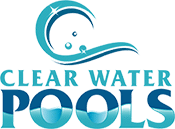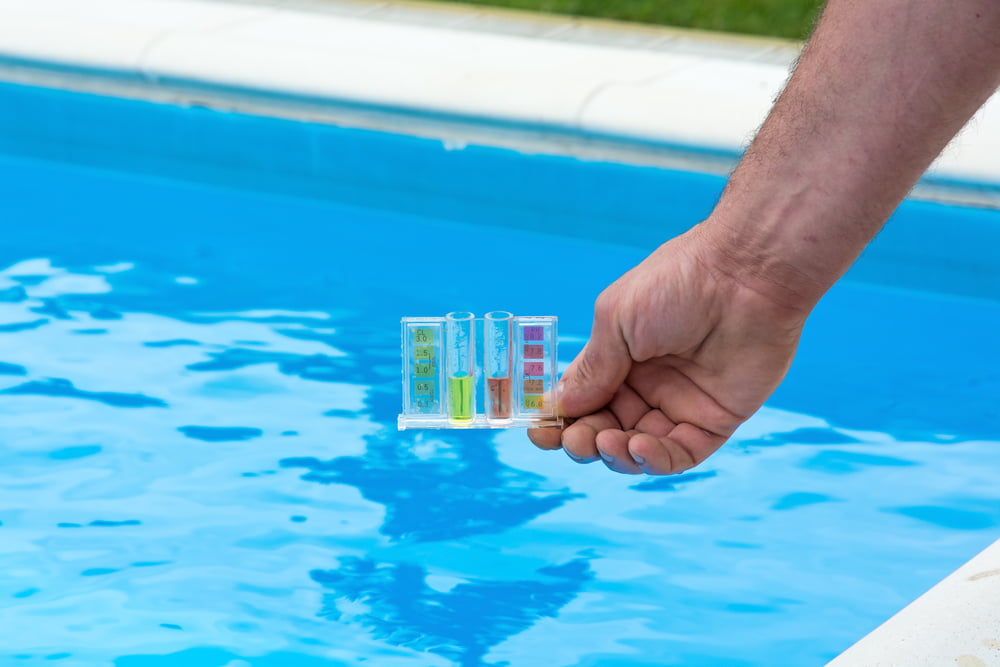Pool Water Testing Made Easy with a Pool Testing Kit
Pool water testing is an essential routine if you want to keep the water safe for you and your family to swim in. Proper testing ensures that your water remains clean and free of algae, and it also lets you know if your pool chemicals are properly balanced. Unbalanced chemicals can lead to problems such as eye irritation. Too much chlorine can lead to discolored hair and even make you sick if you accidentally swallow it. Imbalance can also lead to more serious issues for your pool including liner and equipment damage that can lead to unnecessary repairs and replacements. Be sure to check out our pool maintenance tips also for valuable information on cleaning your pool.
Learning how to test pool water is pretty simple. All you need is a pool testing kit or a professional. There are solid test strips and liquid kits available. Liquid kits are more expensive in the short term, but professionals like them because they can test for all major chemicals. Before you test, make sure that you’re pool’s been running for an hour. If you’re in a hurry, you can start testing after 15 minutes.
To use a liquid test kit, start by taking the empty, clean container and filling it up with water from near the jets and the pool skimmer. Be sure to dip the container completely upside-down until your elbow is touching the water. Shallow readings don’t always present an accurate picture of what’s going on in your pool.
Once it’s filled up to the fill line, you should add the two reagents from the kit. These liquid reagents come in droppers that allow you to put a few droplets in at a time. The yellow droplets measure chlorine while the red ones measure pH. Next, seal the container and shake well. Make sure to seal the container with a cap since acids from your hands can change the results. When you’re finished, rinse the container out in a sink instead of the pool itself.
The colors will signify the different chemical levels and pH of your pool water. Here’s what an ideal chemical balance should look like:
- pH: between 7.2 – 7.6
- Alkalinity: 120 – 150 ppm
- Calcium hardness: 175 – 225 ppm for above-ground vinyl pools, 200 – 250 ppm for in-ground concrete pools
- Free chlorine levels: 1 – 3 ppm
- Free bromine levels: 1 – 3 ppm
- Copper deposits: 0 ppm
- Iron deposits: 0 ppm
- Cyanuric acid (CYA) or pool stabilizer: 30 – 50 ppm
As for solid pool testing kit strips, they’re cheaper and easier to use, but they don’t give precise measurements and sometimes omit important results. On top of that, they’re single-use and can expire, so their short-term cheapness can be negated in the long run.
To use these strips, simply take a clean, empty cup and fill it elbow-deep with water. Again, try to get it around the skimmer or the jets. Once filled, just dip the strip into the sample and take a reading. The color shades will let you know where your chemicals stand. When you’re finished, store your strips in a cool, dry area to ensure they’ll last all the way to the expiration date.
If you’re new to pool water testing and aren’t sure of your chemical adding ability, you can also have your water tested by a professional. Just get an empty container with a lid, fill it up like before and take it to your local pool store. The professional will know just how to take the test and give you an accurate reading of your chemical status. Bear in mind, however, that this is also the most expensive testing method available.
Now that you know how to test pool water, you should when to test it. Since pool chemistry changes every day due to external influences such as the weather, testing needs to be done on a regular basis. If you’re new to pools, you should test every three days. This way, you’ll become accustomed to the fluctuations in chemical amounts that naturally occur. Once you gain confidence, you can test once a week. If it helps you remember, be sure to set aside a day for testing. If you still need help, contact Clear Water Pools about our pool maintenance plans and leave the testing to us.





